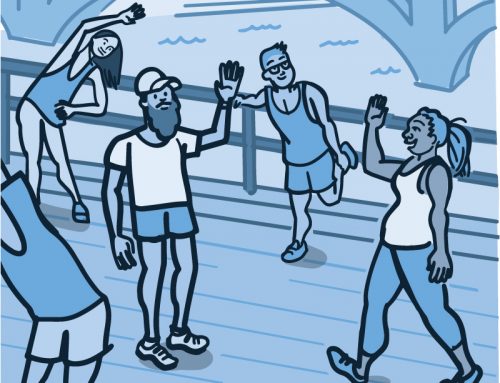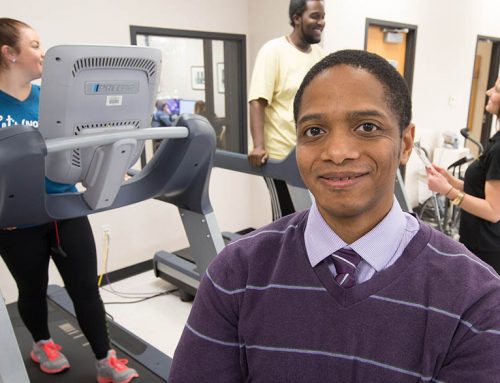
TUESDAY, Oct. 3, 2017 (HealthDay News) — Career couch potatoes, take heart: Just one hour a week of any kind of exercise may lower your long-term risk for depression, new research suggests.
The finding comes from a fresh analysis of a Norwegian survey that tracked exercise habits, along with depression and anxiety risk, among nearly 34,000 adults.
After a closer look at the data, a team of British, Australian and Norwegian analysts determined that people who engage in just an hour of exercise per week — regardless of intensity level — face a 44 percent lower risk for developing depression over the course of a decade than those who never exercise at all.
“The key finding from this study is that doing even a small amount of regular exercise seems to protect adults against future depression,” said study author Samuel Harvey.
“This was not a case of more is better; the vast majority of the mental health benefits of exercise was realized when individuals moved from doing no regular activity to 1 or 2 hours per week,” Harvey explained.
“Also, the mental health benefits were there regardless of the intensity of the physical activity,” he added. “There is great evidence that there are many physical health benefits to more regular exercise, but the mental health benefits leveled out after 2 hours.”
Harvey is an associate professor with the School of Psychiatry at the University of New South Wales, in Sydney, Australia. “The important point here is that any type of physical activity — even just walking — had similar levels of mental health benefits,” he concluded.
The original survey was launched between 1984 and 1986. In that timeframe, participants (who were about 45 years old, on average) underwent physical exams, and filled out lifestyle and medical questionnaires. Mental health assessments were also completed.
The Norwegian pollsters conducted a follow-up survey between 1995 and 1997 among roughly two-thirds of the original participants.
About 7 percent of those tracked through 1997 had developed depression, while about 9 percent had developed clinical levels of anxiety, the findings showed.
Exercise did not appear to have any impact on anxiety risk. But investigators found that, regardless of gender or activity intensity, regular exercise lasting at least an hour per week was linked to a lower risk for developing depression over time.
The study authors calculated that roughly 12 percent of the depression cases might have been prevented if those who had become depressed had previously routinely engaged in one hour of low-intensity activity a week.
Exercising more than one hour per week did not, however, appear to substantially decrease depression risk even further; the lion’s share of the protective impact appeared to max out at the one-hour mark.
But as to how and why such a minimal amount of regular exercise might help stave off depression, the study team wrote that “the bulk of the observed protective effect remains unexplained.” And the study did not prove a cause-and-effect relationship between exercise and lower risk of depression.
Harvey and his colleagues reported their observations in the Oct. 3 issue of the American Journal of Psychiatry.
Simon Rego, chief psychologist at Montefiore Medical Center/Albert Einstein College of Medicine in New York City, said that “there are probably many mechanisms at play that could explain how this works. But it doesn’t have the same effect on anxiety, so we just don’t know yet exactly what’s happening.”
However, Rego added, “What we do know is that what they’ve identified is a very low bar of entry. We’re talking about just an hour of activity a week. And it doesn’t have to be vigorous or intense. You don’t need to go out to a spin class or sign up for a running club. This could just be getting people who aren’t moving much to just increase their daily walking habit. That’s all.”
So, he explained, “while we don’t have all the definitive answers yet, this is a very promising finding because this is something many people may find easy to do.”
SOURCES: Samuel Harvey, Ph.D., associate professor, School of Psychiatry, University of New South Wales, Sydney, and associate professor, Prince of Wales Hospital’s Black Dog Institute, Randwick, Australia; Simon Rego, Psy.D., chief psychologist, Montefiore Medical Center/Albert Einstein College of Medicine, New York City; Oct. 3, 2017, American Journal of Psychiatry
News stories are written and provided by HealthDay and do not reflect federal policy, the views of MedlinePlus, the National Library of Medicine, the National Institutes of Health, or the U.S. Department of Health and Human Services.
[the_ad id=”28610″]




Leave a Reply